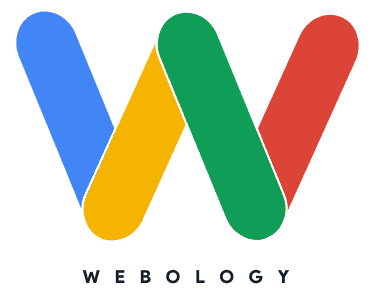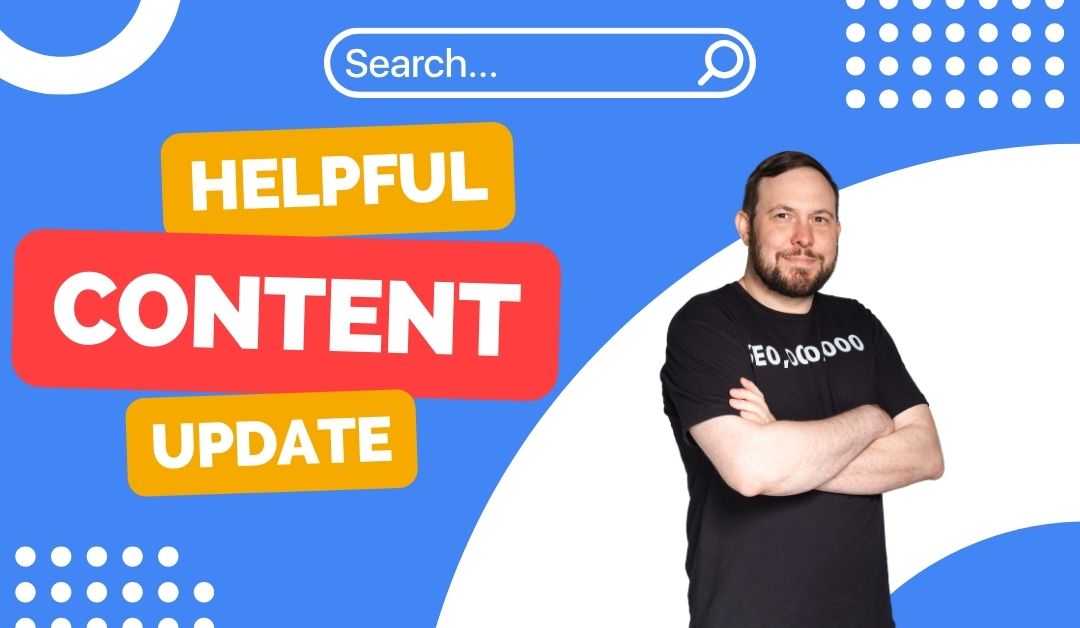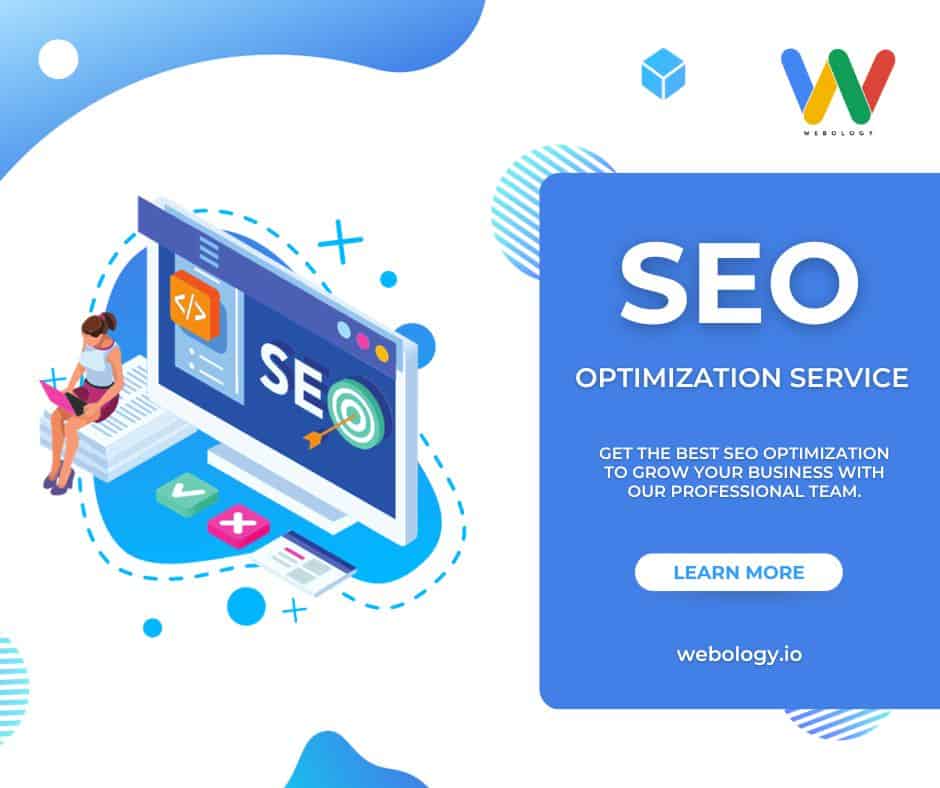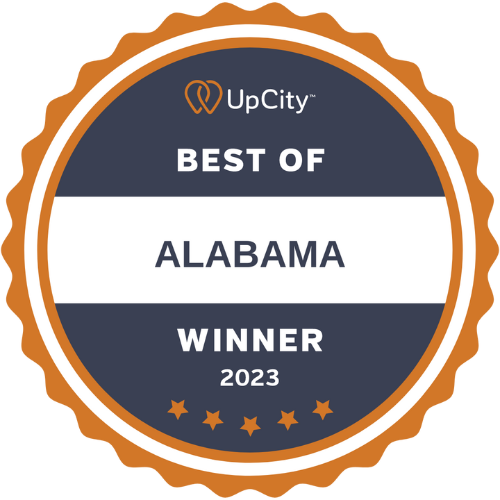SEOs like me are likely aware of Google’s helpful content upgrade rollout which commenced on August 25th, 2022, following its initial announcement on August 18th, 2022, but what about you? Are you new to the game and stuck wondering what exactly this upgrade entails and what implications it holds for your own brand’s SEO?
Table of Contents
Fear not, I’ve got your back! I’m the CEO at Webology and I’ve been playing against the house and winning big in this Google casino for over 10 years now. I’ve been through these updates before and at Webology, we’re ready to ride the wave on the next big update from our friends at Google. I just don’t sweat updates anymore and if you keep reading, you won’t either. Here’s my take on how the helpful content update might impact your business and how we made ours bullet-proof against the next one.
Rolling Out The Red Carpet for A-List Content Creators
Google’s helpful content update has rolled out like a red carpet, inviting content creators to the SEO Oscars—where the prize is better visibility and user satisfaction. This latest tweak in the Google algorithm isn’t just another update; it’s a full-fledged transformation aiming to prioritize content that genuinely provides value.
Imagine the Google helpful content update as your friendly neighborhood librarian, ensuring you get the book you need, not just the flashiest cover. It’s all about enhancing the experience, ensuring that Google’s trove of information actually helps those seeking answers. In simple terms, the helpful content update expects websites to put users first, making them the VIP guests at your online party. For the SEO maestros at Webology, this is exciting news because it aligns perfectly with our own ethos: create content for people, not just algorithms.
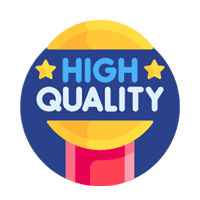
What is Google’s Helpful Content Update?
Google’s helpful content update is an algorithm change to encourage informative and valuable material. This update will consider variables such as how well the material answers a searcher’s question, how straightforward it is to locate the information in the article, and how well the content is arranged.
This upgrade necessitates that SEOs begin producing helpful and informative content. To accomplish this, you must first understand what your audience seeks and then create content that answers their questions. Also, your information must be simple to read and locate, so it should be well-organized and straightforward.
The system behind this update scrutinizes your content strategy, ensuring that the material caters to the interests and queries of living, breathing searchers—and not just the search engines

What’s The Impact of Google’s Helpful Content Update
Because of this upgrade, valuable and informative information will have a better chance of moving up in Google’s search results rankings. This indicates that for your content to rank well, you must ensure that it is informative and helpful to the reader. In addition, the content on your website needs to be simple to read and locate, so you need to make sure it is well-organized and straightforward to browse. Include interactive elements, but only when they don’t distract or cause the page to slow down. Here’s how and below is a table you can reference when you’re building new content on your site to make sure you include the main elements required to rank well in just about any niche imaginable:
| Category | Strategy | Action Items | Expected Impact |
|---|---|---|---|
| Content Quality | Create Compelling Headlines | Use power words, ensure headlines are clear and promise value. | Higher click-through rates, better first impression. |
| Provide In-depth Information | Include comprehensive coverage of the topic, with data and examples. | Position as a thought leader, increased credibility. | |
| Update Content Regularly | Revise outdated content, add recent information and resources. | Improved relevance, repeat visits. | |
| Visuals | Use High-Quality Images | Integrate professional, relevant images to support text. | More engaging content, better user understanding. |
| Include Infographics | Create and incorporate infographics to explain complex information. | Enhanced comprehension, shareable content. | |
| Optimize Video Content | Provide video summaries, use engaging thumbnails, transcribe audio. | Accommodate different user preferences, accessibility. | |
| User Engagement | Add Interactive Elements | Implement quizzes, polls, or calculators to encourage interaction. | Increase participation, longer dwell time. |
| Encourage Comments | End posts with a question, make commenting easy and moderated. | Create a community, generate user-generated content. | |
| Internal Linking | Link to related content, use compelling anchor text. | Guide user journey, reduce bounce rate. | |
| Navigation & Usability | Optimize Page Layout | Implement a clean design, use headings and bullet points for readability. | Improved readability, easier content consumption. |
| Improve Load Times | Optimize images, leverage browser caching, minify CSS and JavaScript. | Faster access to content, reduced frustration. | |
| Responsive Design | Ensure the website is mobile-friendly and looks good on all devices. | Better accessibility, higher engagement from mobile users. |
Adding these elements to your content strategy can greatly enhance the user experience on your website. Next let’s look at some more specific steps you can take based on Webology’s observations of the websites that did surprisingly well throughout the many algorithm updates hitting us all at once in the wake of AI between 2022-2023. What did they all have in common? Real people actually reading and engaging with their brand somewhere online.
How to Prepare for Google’s Helpful Content Update
Keep your digital hat on because this isn’t your garden-variety algorithm tweak; it’s Google shouting from the rooftops that user experience (UX) is now the belle of the ball! When AI content hit the SERPS, Google was faced with a massive challenge keeping up with the flood of new content on websites, and there were two tried and true signals they could rely on:
- Link Authority Signals
- User Behavior Signals
Both are important but today we will focus on the user signals because unless you are a larger brand with budgets for link-building, you’re going to get way more mileage by fixing your website experience to keep your user base happy. We’ll do that be becoming digital sleuths and diving into the data.
As SEO services providers, it’s time to channel our inner Sherlock and scrutinize our website’s data to understand what makes content not just helpful but irresistibly valuable. Incorporate SEO practices that dance to the rhythm of Google’s helpful content song, ensuring every word quenches the thirst of user curiosity while serving up a sumptuous feast of knowledge.
Think of your content as a magical elixir for search queries, blending marketing strategy, media, and helpful updates into an epic user journey. Staying ahead of these changes is key, and all it takes is a pinch of creativity and a dollop of expertise from your pals at Webology. Join us in mastering the art of helpful content that sings harmoniously with Google’s updates, and watch as your rankings soar to stellar heights! Here’s a few tips to get you started:
- Focus on User Experience: Make sure your content is informative, easy to navigate, and mobile-friendly.
- Create People-First Content: Develop content primarily for your audience, not for search engines.
- Evaluate Content Purpose: Clearly define the purpose of each piece of content and ensure it fulfills the user’s intent or question.
- Remove Low-Quality Content: Audit your site and get rid of non-original, low-quality, or outdated content that doesn’t add value.
- Improve E-A-T: Enhance your website’s Expertise, Authoritativeness, and Trustworthiness by featuring credentials and testimonials.
- Optimize for Semantic Relevance: Use related words and synonyms that support the main topic to help Google understand the context.
- Include Helpful Supplementary Content: Add FAQs, resources, links, and tools that help enrich the user’s understanding and experience.
- Ensure Content Depth and Comprehensiveness: Create thorough content that covers a topic in-depth.
- Avoid Over-Optimization: Steer clear from keyword stuffing, excessive tagging, and manipulative linking practices.
- Keep Content Up to Date: Regularly update existing content to remain accurate, relevant, and aligned with the latest information.
- Use Subheadings and Lists: Break up text with clear subheadings and bullet points to improve readability and scannability.
- Utilize Multimedia Elements: Include images, videos, and infographics to make content more engaging and easier to understand.
- Improve Page Load Speed: Optimize your site’s loading times as page speed is a factor in user experience and SEO ranking.
- Implement Structured Data: Use schema markup to give search engines detailed information about the content of your pages.
- Monitor Performance Analytics: Continuously track your site’s performance, user behavior, and rankings.
- Engage with Visitors: Encourage comments, questions, and feedback and respond to them to increase engagement.
- Get Quality Backlinks: Focus on natural link building from reputable sites to boost the credibility and reach of your content.
- Avoid Writing for Algorithms: Steer clear from tactics designed to trick algorithms, focusing instead on genuine content for users.
- Provide a Unique Angle: Offer perspectives or insights that set your content apart from competitors, adding unique value for users.
- Collaborate with Influencers: Partner with industry experts to create or share your content, expanding your reach.
Google’s helpful content update is an algorithm change to encourage informative and valuable material. To accomplish this, you must first understand what your audience seeks and then produce content that answers their questions. Also, your information must be simple to read and locate; it should be well-organized and direct to the point. It’s all about generating a chord-strumming resonance with your readers that keeps them coming back for more. That’s how the update works; it’s a change that champions content that’s helpful, and it’s here to ensure your strategy sails smoothly towards success.

Blake’s Technical Notes:
Everything we’ve mentioned so far covers Google’s logic and reasoning for the update in a way that’s easy to digest but as an SEO, it’s my job to dig in and figure out how they actually implement these things in the SERPs. As I am sitting here writing this on an early Sunday morning in February when the weather is completely cold as shit outside, I’ll freely admit that at least half of what you’ve read so far is content I edited from an AI model. The fact that I can confidently say this post will still index and rank for keywords before publishing is a testament to the fact that helpful content isn’t always 100% human written content. But adding real-life experiences like the fact that I’m getting old and typing in the cold sucks or including my own industry insights on top of the generated content is what will stand out in the future on search.
The reality of SEO is that Google only has so many resources available to be able to rank the billions of web pages out there, so helpful content will be largely measured through user behavior signals that are most likely measured through Chrome and the open source Chromium browser. This data allows Google to deeply understand how users interact with content and what they find most useful. While we don’t have any possible way to know exactly what Google is tracking, here’s a list of some of the signals I suspect they leverage along with quality rater data to rank websites just like yours in search results:
- Click-Through Rate (CTR) from Search Results
- Time Spent on Page
- Page Views per Session
- Bounce Rate
- Return Visits to a Webpage
- Frequency of Bookmarks or Additions to Favorites
- User Engagement with On-page Elements (e.g., video plays, image gallery interactions)
- Scroll Depth
- Completion of On-page Goals (e.g., sign-ups, downloads)
- Site Navigation Patterns
- Exit Pages
- Social Shares and Likes
- Comments and On-page User-generated Content
- Pogo-sticking (quickly returning to search results after visiting a page)
- Mobile Usability (e.g., tapping, pinching, zooming actions)
- Load Time and Page Speed
- Error Rates or Technical Issues Encountered by Users
- Interactive Performance (e.g., response time to user interactions)
- Cross-device Usage Patterns
- Personalization and User Preferences
- Use of Site Search Functionality
- E-commerce Metrics (e.g., cart add, checkout progression)
- Form Engagement and Completion Rates
Related Post: Duck Duck Go – The Search Engine That Doesn’t Save User Data

This is why it’s important to not just rely on keyword optimization, but also focus on creating unique and valuable content that will engage users. The more time users spend on your website and the lower your bounce rate, the better signal you are sending to Google that your content is relevant and valuable.
But how do you create helpful content? It starts with understanding your target audience and their pain points. What questions or problems do they have that your business can solve? By addressing these issues in your content, you are providing value and establishing yourself as an authoritative source in your industry. Additionally, incorporating personal experiences or insights into the content adds a human touch that sets it apart from generic keyword-optimized articles.
Make Your Content More Helpful by Hiring Webology
At Webology, we’ve got our finger on the pulse, ensuring that every piece of helpful content google loves is woven into your strategy. From algorithm tweaks to user experience upgrades, we help your company align with Google’s latest expectations. It’s time to update your approach and stay ahead of the curve – after all, google doesn’t just want any content; they want content that truly helps so hire us today and get content that ranks for the keywords that matter most to your business.
Other Noteworthy Google Algorithm Updates
Google updates have come in all shapes and sizes over the years, and it’s important for businesses to stay updated on the latest changes. Here are a few other noteworthy Google algorithm updates that have shaped the way we approach content creation and many other aspects of a brand’s web presence management strategy over the years:
| Update Name | Release Date | Major Impact |
|---|---|---|
| Florida | November 2003 | Targeted keyword stuffing and other Black Hat SEO tactics. |
| Panda | February 2011 | Punished low-quality content and plagiarism to improve search quality. |
| Penguin | April 2012 | Addressed spammy link-building practices and keyword stuffing. |
| Hummingbird | August 2013 | Improved search relevancy by better understanding user queries. |
| Mobile | April 2015 | Boosted mobile-friendly pages in mobile search results. |
| RankBrain | October 2015 | Enhanced results by incorporating AI to interpret complex queries. |
| Medic | August 2018 | Adjusted the relevance of content, impacting many health and wellness sites. |
| BERT | October 2019 | Better understand the nuance and context of words in searches to match intent. |
| Page Experience | May 2021 | Integrated user experience metrics, like load time and interactivity, into ranking factors. |
| Product Reviews | April 2021 | Improve the quality of product review pages in search results. |
| Core Updates | Ongoing (Multiple Dates) | Regular updates to improve search relevancy and overall user experience. |
Aligning Your Content Strategy with Future Google Updates for Better User Experience

In the ever-evolving world of SEO, aligning your content strategy with Google updates is essential for delivering a stellar user experience. Understanding Google’s helpful content update can seem like deciphering a complex algorithm, but it’s simpler than it appears. At the core of this update is the push to prioritize useful, high-quality content that genuinely caters to search intent. Webology’s savvy SEO services provide just that. It’s about ensuring that your marketing efforts lead to meaningful interactions, not just a fleeting glimpse of unhelpful content. By embracing Google’s content update guidance, your brand’s strategy becomes a symphony of relevant data and engaging media all across your website. Navigating these updates isn’t just about dodging SEO pitfalls; it’s a strategic quest to elevate your content to the top of the SERPs. Remember, useful content is king in the search landscape and Google’s updates are actually just your roadmap to SEO success. Let’s make your user experience count—because when content and strategy harmonize, you can practically hear the sweet sound of money dropping into your bank account!
FAQ’s – Blake’s Helpful Answers For Your Helpful Content Update Questions
What is Google’s Helpful Content Update?
The Helpful Content Update is Google’s algorithm adjustment designed to reward content that provides genuine value to users. It emphasizes quality and relevance, encouraging creators to craft content that answers real questions and offers a helpful experience, rather than just aiming to rank well in search results.
How does Google’s Helpful Content Update affect SEO strategies?
With this update, traditional SEO strategies that focus solely on keywords and search engines may need an overhaul. Now, the priority is on creating content that resonates with human readers by being informative, engaging, and valuable. SEO strategies should be re-oriented to align with these guidelines to achieve better rankings and satisfy user intent.
How can I ensure my content aligns with Google’s Helpful Content Update?
Focus on your audience’s needs by creating content that answers their questions and provides useful insights. Avoid fluff and ensure that each piece is full of substance and relevant information. Content should be user-centric, and engaging to meet Google’s quality standards. Consulting with experts like Webology can also guide you to optimize your content strategy effectively.
What are the benefits of following Google’s Helpful Content Update?
Adhering to the principles of the Helpful Content Update can lead to better visibility on Google, a more loyal audience, increased user satisfaction, and higher engagement rates. By putting users first and providing high-quality content, your site can become a trusted resource that readers and Google both appreciate.
How can Webology help with adapting to Google’s Helpful Content Update?
Webology specializes in crafting SEO strategies that align with the latest Google updates. By working with Webology, you can ensure that your content is not only optimized for search engines but also provides the value and user-first experience that Google is rewarding with this update. We can help you fine-tune your approach to content creation to take full advantage of the benefits this update offers.

How Webology Keeps Your Content Helpful and Relevant
Google’s Helpful Content Update represents a significant development, emphasizing user-centric content. For webmasters and content creators, embracing this change offers an opportunity to enhance SEO strategies effectively. By prioritizing user engagement through valuable insights, authenticity, and a touch of personality, your content stands a better chance of succeeding in Google’s rankings.
Embrace these principles to elevate your content strategy, and witness your SEO performance reach new heights in Google.
